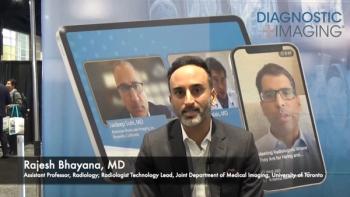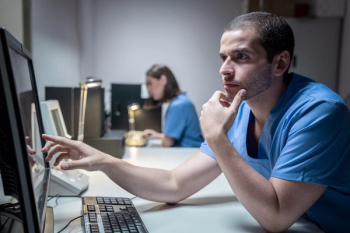
Variation Exists in Whether Radiologists Recommend Follow-Up for Pulmonary Nodules
Not all radiologists adhere to practice guidelines that direct providers how to respond to the presence of pulmonary nodules.
A follow-up recommendation from a radiologist in response to a pulmonary nodule is not necessarily guaranteed. A new study shows there is widespread variation in whether providers make this call.
In a new study published Feb. 7 in the
“Unwarranted variation for pulmonary nodules could have significant downstream implication on not only frequency of repeat imaging, but overall medical costs and quality of patient care,” wrote the team led by Neena Kapoor, M.D., quality of patient safety officer with Brigham and Women’s radiology department. “How to alter radiologist behavior and reduce variation in reporting of follow-up recommendations is a challenging problem that likely requires multiple interventions and stake holder engagement.”
In reaching this conclusion, Kapoor’s team examined 142,001 chest and abdominal reports from its abdominal, thoracic, and emergency radiology sub-specialty divisions between Jan. 1, 2016, to Dec. 31, 2018. Using natural language processing, they identified 24,512 pulmonary nodule reports that did not end with a lung cancer diagnosis.
Among the reports they analyzed, 20 percent – 4,939 reports – included follow-up recommendations for pulmonary nodules. These reports came mainly from chest CTs (76 percent) and outpatient environments (63 percent), and thoracic radiologists assessed nearly two-thirds (64 percent).
According to their investigation, the team found that male patients and abdominal CTs were less likely to have a follow-up recommendation for a pulmonary nodule. However, older patients had higher rates of follow-up recommendations. In addition, inpatient and emergency department exams, as well as exams where a trainee is present, are more likely to result in a recommendation.
All told, the team said, they identified a 4.3-fold difference between radiologists in the probability that they would make a pulmonary nodule follow-up recommendation. However, they stopped short of drilling down on why these differences exist.
“Our work serves as a first step for future work to quantify the magnitude of variability in follow-up recommendations for pulmonary nodules,” they said. “Further studies will need to determine the downstream implications of variation in follow-up recommendations, including the clinical appropriateness of radiologist recommendations, variability in length of follow-up or imaging modalities used, and downstream imaging costs and quality of care.”
For more coverage based on industry expert insights and research, subscribe to the Diagnostic Imaging e-Newsletter
Newsletter
Stay at the forefront of radiology with the Diagnostic Imaging newsletter, delivering the latest news, clinical insights, and imaging advancements for today’s radiologists.




























